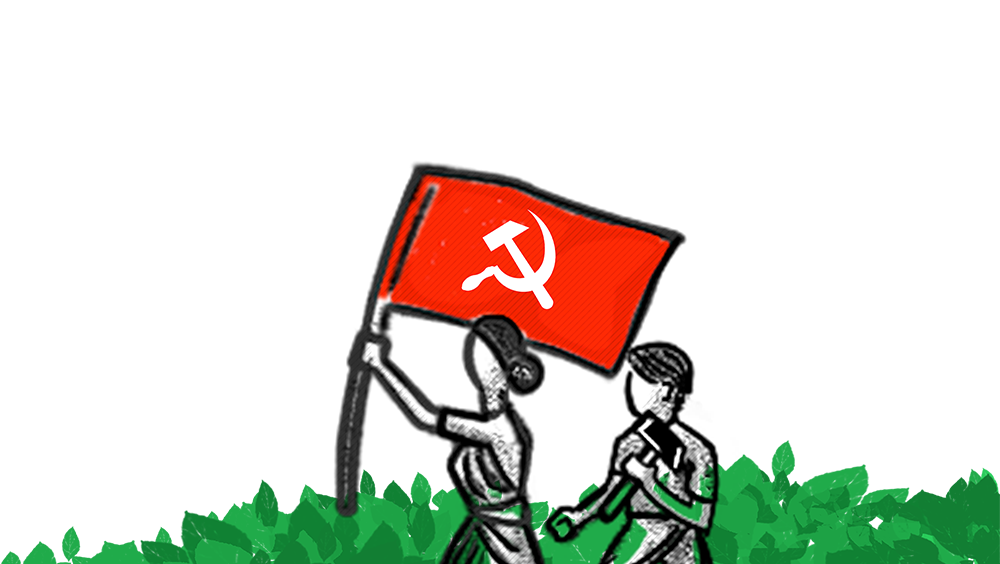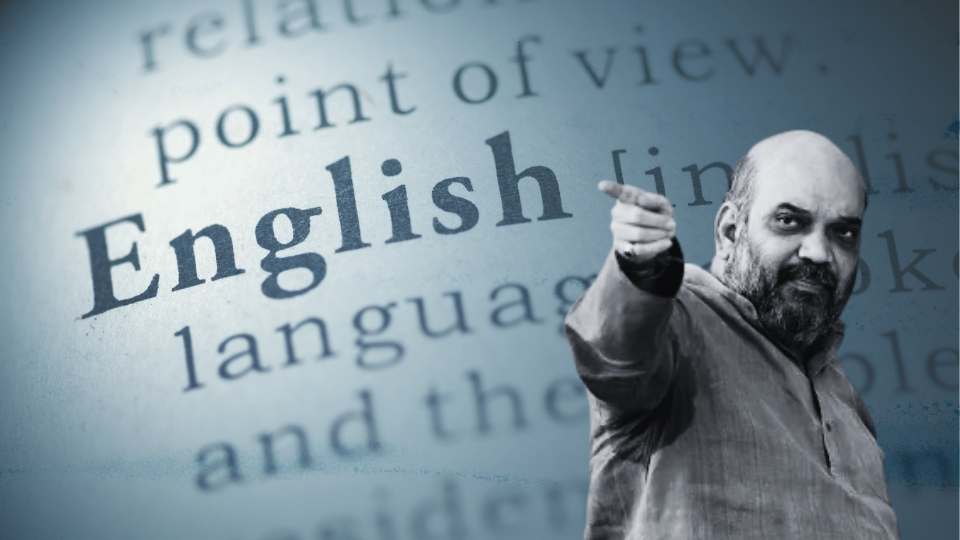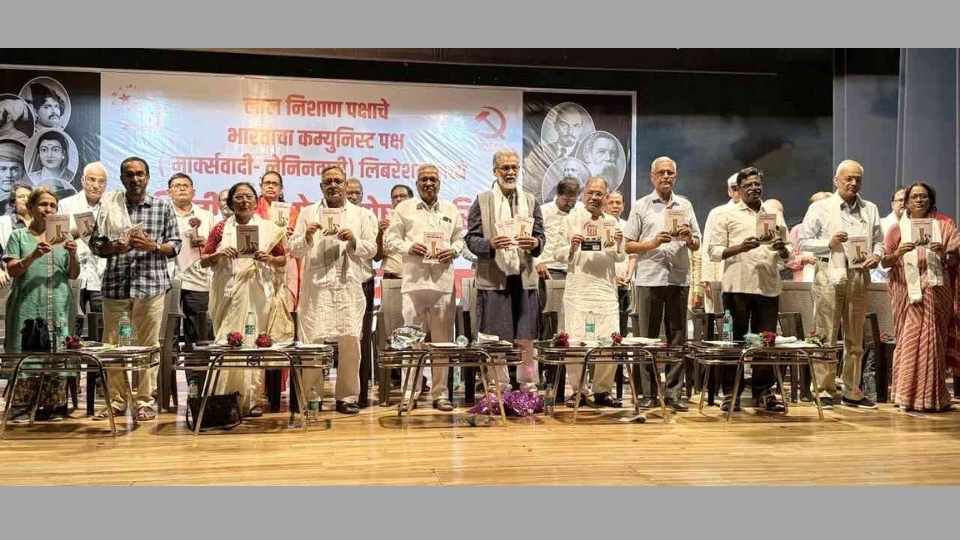PART - III
[Our plan was to conclude the article in this number, but we have had to split the last instalment into two parts in order that we can cover some important political developments. -- Ed.]Having briefly narrated the series of economic reforms since late 1970s in Part II, it is time to zero in on the latest -- and yet to be fully unfolded -- round of reforms. But any scientific inquiry requires a conceptual/theoretical framework in which one must analyse the relevant facts to arrive at the essential truth. For us, that framework can only be based on Marxism-Leninism-Mao Zedong Thought. Let us then start with a very relevant quotation from Mao.
Mao’s idea of Uninterrupted Revolution
In a short note with the above tittle (italicised here) Mao Zedong wrote in January 1958:
“Our revolutions have occurred one after another”, citing the post-1949 anti-feudal land reform, the movement for agricultural co-operation that followed, and finally, the socialist transformation of private industry, commerce and handicrafts. This “socialist revolution in the ownership of the means of production” Mao continued, “was basically completed in 1956. It was followed by a socialist revolution on the political and ideological fronts last year” (the reference is to a “rectification campaign1 at the grass-roots level”). As soon as the campaign is over, Mao added, the party must start “a technological revolution”. Because, “China’s economy is backward and its material base weak. As a result, we are still not in a position to take the initiative and feel mentally constrained, and in this respect we are not yet liberated. We need to exert ourselves.” (emphasis added)
And why continue to “exert ourselves” after decades of back-breaking toil, hardships and sacrifices? Was it not time to take some rest and then resume the fight? Mao thought otherwise:
“In revolution as in war, we must set new tasks immediately after each victory. This keeps both the cadres and the masses full of revolutionary zeal … with new tasks pressing, everyone’s attention is set on how to complete them. Our aim in proposing a technological revolution is to get everyone to study science and technology.”
Mao concluded this note for inner- party circulation with the motto that was always – in war and peace, revolution and reconstruction – uppermost in his mind, ‘put politics in command’:
“Politics is apt to be neglected with a shift to the technological side, so we must stress integrating technology with politics.”
Thus in the Chinese context, Mao saw the major reforms following the new democratic revolution as nothing short of revolutions in specific domains -- such as land relations; agricultural cooperation; industry commerce and handicrafts; ideology and politics; science and technology; and so on – as necessary components of what is called socialist revolution. In other words, socialist revolution is not an event but a very long-drawn process (“uninterrupted”, or in the words of the young Marx, “revolution in permanence”) oriented towards establishment of communism in China and the whole world. Without this basic orientation, this steadfast resolve, the reforms cease to be revolutionary.
Secondly, Mao was acutely aware that building a solid material base (“the serious task of economic construction”, which he highlighted – in 1949 itself – as the central task, of which technological innovation and progress were obviously a vital component) and a dynamic ideological-political-cultural superstructure were equally critical and complementary to each other. Simultaneous perusal of the twin tasks was what he called “continuing the socialist revolution under the dictatorship of proletariat” and this was a signal contribution of his to the Marxist-Leninist theory of revolution.
Another point, not captured in this particular quotation but highlighted very prominently in Mao’s post-1949 speeches and articles, available particularly in Volume 5 of his Selected Works, deserves our special attention here. For Mao, an integral, inalienable component – the very foundation – of proletarian dictatorship (over counterrevolutionary forces) was unbridled democracy (“free airing of views”, right to dissent, “criticism and self-criticism” and so on) of the people. Sans this dialectic, proletarian dictatorship tends to turn into bourgeois dictatorship, he believed.
Taking these theses as our point of departure, let us investigate the more important reforms and other measures introduced in China in recent years.
Growth with Rising Inequality
It is universally recognised that the reform-induced rapid economic growth and substantial poverty reduction2 in China have been achieved at the cost of a whole range of collateral damages, the most conspicuous being the rampant increase in income and wealth inequality. Already the 19th Party Congress (2017) observed that development in China was “unbalanced and inadequate” (emphasis added) and stood in very sharp contradiction with the “peoples’ ever-growing need for a better life”. According to data from Credit Suisse, the country’s Gini-coefficient3 widened to 70.4 in 2020 from 59.9 in 2000, making China one of the world’s most unequal major economies. As in other capitalist economies including India, during the public health crisis the share of personal wealth for China’s billionaires has doubled from 7% in 2019 to 15% of GDP in 2021.
Then there are problems like severe environmental degradation and risky levels of debt stock (close to 300 per cent of GDP) which means, in plain English, much of the growth has been debt-dependent and prone to violent financial and economic shocks.
To try and tackle this tricky situation, the Party/Government adopted a series of measures even in the face of difficulties posed by intense trade wars with the US and the COVID-19 pandemic.
The Jack Ma Shocker and ‘Crackdowns’ that Followed
A political storm started in October last year with a speech by Jack Ma, the co-founder of Alibaba Group Holdings, in which he attacked the country’s financial regulators as having a “pawnshop mentality.” The government immediately summoned Ma to Beijing. The nearly $40 billion initial public offering (IPO) of Alibaba’s fintech arm, Ant Group – owner of the country’s largest digital payments platform Alipay – planned for Hong Kong and Shanghai a few days later, was summarily cancelled. The Party Politburo made its position clear: it was determined to “block the disorderly spread of capital”.
Later on, Alibaba was also hit with a record fine of $ 2.8 billion for failing to seek approval for its stock acquisitions of other companies in 2014-18. While the amount of fine was not too much for Alibaba, retroactive application of new anti-competitive rules announced in November 2020 signaled a stern warning to Ma and others of his ilk: do obey the rules in future. Most of the domestic and foreign media sensationalised all this as retaliation for Ma’s arrogant comments. But those in the know pointed out that far from being a knee-jerk reaction against one individual, it was part of a comprehensive plan – laws, regulations, SOPs – that was in preparation for months if not years, and was put up in public domain soon after the shocker.
Alibaba was not alone. Tencent Holdings – one of the 10 biggest companies in the world – was made to pay a fine of 500,000 yuan ($77,323) in connection with its acquisition of a leading Chinese music streaming company, which enabled Tencent to capture more than 80% of the domestic music streaming market. It was also asked to give up its exclusive music streaming rights. Tencent’s WeChat (a text and voice messaging app similar to WhatsApp but incomparably more versatile in applications4) also temporarily suspended registration of new users, reportedly to beef up its information security system as asked by the regulators. Didi Chuxing (better known as Didi Global) – the Uber of China – was raided less than a week after its listing in New York Stock Exchange, as part of a data security and privacy investigation. The maximum fine for violation of China’s anti-monopoly law was imposed on it and the app was removed from app stores. Action was taken against many others like Baidu, a Chinese multinational technology company specializing in Internet-related services and artificial intelligence (AI), headquartered in Beijing.
However, that the anti-monopoly drive is more in the nature of a belated corrective than a real crackdown is recognised by both sides. The People’s Daily sought to reassure the private sector that support for it “had not changed”; that recent regulatory actions were meant to “rectify market order”, promote fair competition, protect consumer rights and “perfect the socialist market economy system”. And the tycoons in their turn digested everything – the fines, the declines in their share prices, and most important, the long term curbs on the freedoms they were accustomed to enjoy so long – in complete silence. More, they pledged tens of billions of dollars for job creation and social welfare initiatives in response to Xi Jinping’s ‘Common Prosperity” call.
Disciplining Financial Markets and Allied Sectors
Banning all cryptocurrencies including Bitcoin, major crackdown on tax evasion (recently a top celebrity was caught evading taxes and publicly shamed), discouraging and covertly penalising (i.e., without publicly stating the real cause of the penalty imposed) overseas IPOs, the persistent tightening in the housing market in an attempt to avoid a US-style housing bubble; – these are some of the steps recently taken to cleanse the money markets. With the government stepping up scrutiny of forex dealers – officials of China’s State Administration of Foreign Exchange (SAFE) have now embedded themselves on currency trading floors – banks and traders in the Hong Kong and Shanghai stock exchanges are feeling the heat. In fact several Chinese banks have withdrawn individual forex trading products, partially closing another avenue for speculation. All these comprise attempts to curb the unbridled expansion of unproductive and speculative investment and the associated financial risks that pose grave threats to the economy as a whole.
In addition to restrictive measures, there are some expansive ones too. For example, the government is now diverting more financial support to backward regions. To cater to innovation-oriented SMEs and “smaller public limited companies”, a new stock exchange has been founded in Beijing. It is also expected to lure domestic companies into listing at home instead of overseas and thus reduce reliance on foreign investment.
The regulatory measures imposed on big capital were long overdue and generally speaking, they are welcome. Per se, however, they have nothing socialistic about them. There are similar instances galore in capitalist countries -- such as the crackdown on the excesses of robber-baron capitalism in the US in the late 19th century, which led to path-breaking anti-monopoly laws that restored normal (though not ‘perfect’) competition and cleared the ground for speedier development of capitalism. More recently, we have seen anti-trust moves like the one against Microsoft in 1998. And today capitalist states across the world are taking stringent steps against Tech giants like Amazon, Goggle, Facebook and Apple. However, it is reassuring that the CPC is careful not to allow the rise of a politically powerful “oligarch” class, as happened in Russia in the 1990s. The Jack Ma episode in particular demonstrates that unlike in India and many other developing countries, in China the state is not exactly dictated by well-connected wealthiest capitalists. The former retains the political command to decide when to promote them, even by allowing them to flout regulations with impunity, and when – with changes in situations and priorities – to pull the strings.
A New Catchphrase
The shibboleth “common prosperity” – euphemistically also called “Getting Rich Together” – is now appearing everywhere and in everybody’s mouth. But as a concept, it has its historical roots.
Few people remember that when in the 1980s Deng Xiaoping said “let some people and some regions get rich first”, he also stated why: “We permit some people and some regions to become prosperous first, for the purpose of achieving common prosperity faster.”5 And now, following last year’s official declaration that with the eradication of extreme poverty, China had become a “moderately prosperous society”, in February this year the President set “common prosperity” as the next target in China’s development. It is an “essential requirement of socialism”, he said, adding that the government needs to “encourage high-income people and enterprises to give back to society more,” and “create opportunities for more people to become rich.”
As we have noted above, billionaires in China responded to this call in ample measure, ostensibly for keeping the ruling party in humour and avoiding sanctions. Jack Ma, who had sort of quarantined himself in the aftermath of the totally unexpected thrashing he received, made his first public appearance to say that it was entrepreneurs’ responsibility to “work hard for rural revitalization and common prosperity.”
The professed aim of ‘Common Prosperity’ is to “regulate excessively high incomes” in order to ensure “common prosperity for all”. As the General Secretary put it in a long speech to party members: “Realizing common prosperity is more than an economic goal. It is a major political issue that bears on our Party’s governance foundation. We cannot allow the gap between the rich and the poor to continue growing — for the poor to keep getting poorer while the rich continue growing richer. We cannot permit the wealth gap to become an unbridgeable gulf. Of course, common prosperity should be realized in a gradual way that gives full consideration to what is necessary and what is possible and adheres to the laws governing social and economic development. … We must be proactive about narrowing the gaps between regions, between urban and rural areas, and between rich and poor people.”
Under this policy orientation, the government is now diverting more financial support to poorer regions and taking steps to control property prices. Annual residential rent increases has been capped at five per cent. The Supreme Court also has chipped in, declaring the 9-9-6 work-schedule (9 am to 9 pm, 6 days a week) common at many private-sector companies (especially for gig workers) to be illegal.
In addition, the President has chosen eastern Zhejiang province, where he once served as the Governor and Party Secretary during 2002-2007, as a “common prosperity” pilot zone. This province happens to be the location of the headquarters of several prominent internet corporations – Alibaba among them.
The Latest Economic Reforms: Major Takeaways
In sum, the new set of reforms are multi-dimensional, varied are the objective factors and motives behind them, and assessments also vary widely. What is clear is that the government is now focussed on strengthening control over domestic as well as foreign private companies while boosting the role of state-owned firms; encouraging crucial frontline technologies like semiconductor chips and electric vehicle batteries while discouraging speculative and corrupt practices; promoting the domestic market and the SMEs sector while breaking through trade barriers imposed by the US and its allies. This strategy may be seen as a stricter form of state capitalism, featuring a substantially enhanced role of state enterprises, government control and planning after a long period of relative economic liberalism with the goal of creating a far more self-sufficient economy6 that delivers high quality (more equitable, more balanced, more environment-friendly, more effectively planned and controlled by the state rather than blind market forces) – if slower – growth.
But beyond the realm of economic policy in the narrow sense, there are other important developments and political issues that we need to look at if we are to understand China today. This we propose to do in the next and concluding part.
Notes:
1. Mao’s definition of this oft-misunderstood term was, “learning Marxism through criticism and self-criticism”. Even after the completion of that particular campaign, he wrote in this note, it would still be necessary periodically to organise similar ones for “full airing of views and the introduction of reforms”.
2. For the period 1978–2005, Chinese GDP per capita increased from 2.7% to 15.7% of U.S. GDP per capita, and from 53.7% to 188.5% of Indian GDP per capita. Per capita incomes grew at 6.6% a year. Average wages rose sixfold between 1978 and 2005, while absolute poverty declined from 41% of the population to 5% from 1978 to 2001.
3. An indicator of inequality -- the higher the index, the greater the inequality.
4. For example, WeChat Pay handles nearly 40% of the country’s mobile payments. This leaves small and midsize app developers in China unable to promote their services independently; Tencent has turned these apps into mini-programs, of which there are millions. Tencent has also expanded its business scope by acquiring app developers or buying stakes in them.
5. In an interview with America’s CBS news correspondent Mike Wallace on 2 September, 1986, Deng Xiaoping was asked to comment on a rather surprising statement: “To get rich is glorious.” Deng responded: “There can be no communism with pauperism, or socialism with pauperism. So to get rich is no sin. However, what we mean by getting rich is different from what you mean. Wealth in a socialist society belongs to the people. To get rich in a socialist society means prosperity for the entire people. The principles of socialism are: first, development of production and second, common prosperity. We permit some people and some regions to become prosperous first, for the purpose of achieving common prosperity faster.”
6. As we pointed out in part II, the present leadership is batting for an economy with “domestic or internal circulation as the main body and the domestic and international dual circulations mutually promoting each other.” In the face of hostile trade wars launched against China by the US and its allies, this appears to be an attempt to reduce dependence on exports as a major growth engine and significantly promote the domestic market. And for that, as we often say in our country, substantially raising the purchasing power of the entire working people is the sine qua non. And that really is the basic motive behind the watchword ‘common prosperity’.





